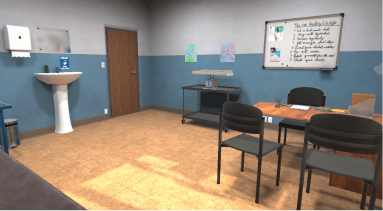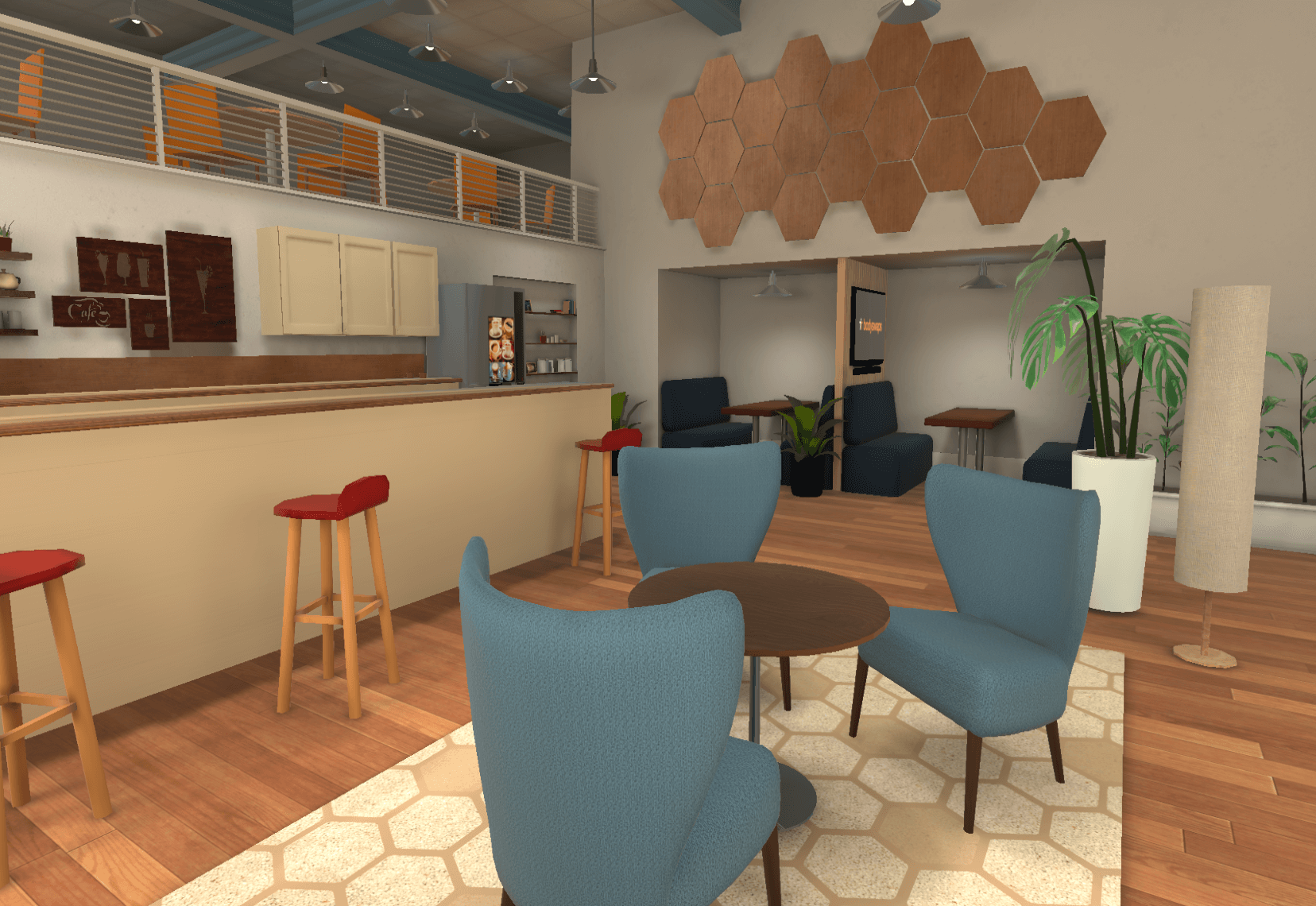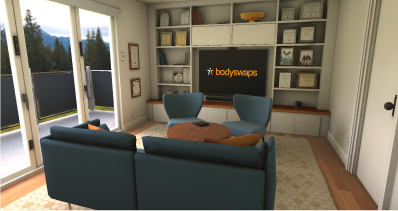Equity & Anti-Racism in Global Healthcare
Tutor Notes
Despite good intentions, implicit bias and a lack of cultural humility can mean that some clinicians on global healthcare experiences don’t achieve the positive outcomes they had hoped for.
This module on Equity and Anti-Racism in Global Healthcare provides healthcare professionals with a psychologically safe space in which to explore implicit biases and motivations, before embarking on global health experiences of their own.
About this resource
Key learner outcome and goals
Learning Outcome
Explore the impact of implicit bias on global healthcare
Learning Goals
- Identify implicit bias
- Recognise the impact of implicit bias on patient outcomes
- Practise strategies for mitigating personal biases
- Navigate difficult but important conversations about bias
A word about terminology
As a medium, Virtual Reality is not best suited to didactic teaching methods.
However, our intention is that all Bodyswaps modules follow a student-centred constructivist pedagogy. This means creating rich experiences in which learners can explore key concepts and ideas and reach their own conclusions.
This is why our documents speak in terms of learning goals and outcomes, rather than measurable ‘learning objectives’ (a la Bloom’s Taxonomy) per se.
Module structure
The complete journey takes the learner through 4 interactive topics, led by virtual coach Nola, as well as ancillary activities such as onboarding, self-reflection, and the exit survey.
It is a linear experience, meaning the learner will be guided step by step through all the activities by Nola.
We recommend that learners fully interact with each activity to get the full benefit.
It is estimated that each topic will take the learner approximately 5-10 minutes to complete, although completion times vary depending on whether the learner chooses to repeat topics to explore different options (encouraged) or to fine-tune their freeform responses.
Learner Journey
.svg)
.svg)
.svg)
.svg)
.svg)
.svg)
.svg)
.svg)
Characters
.webp?width=720&height=1050&name=nola%20(1).webp)
.webp?width=720&height=1050&name=luke%20(1).webp)
Luke
American doctor.webp?width=720&height=1050&name=camila%20(1).webp)
Camila
PatientLearning Environments

Consulting Room

Breakout Room

Tutor Room - Bodyswaps HQ
Purpose
Familiarise learners with the controls and navigation
Location
Characters
Ashley and Abeeku (learner guides)
Duration
The first time learners use Bodyswaps, an onboarding sequence familiarises them with the features of the app, takes them through an avatar selection and embodiment activity and prepares them for the experience to come.
This mini-onboarding takes approximately 1 minute to complete.
Purpose
Introduce the module and reflect on current confidence
levels before beginning the activities
Location
Characters
Duration
The simulation begins with the virtual coach, Nola, introducing herself as one of the clinicians at the Elcincita Community Clinic. She explains that the local people here speak Spanish, so she also helps out by interpreting for doctors visiting on their global healthcare experiences.
She then begins exploring the subject of implicit bias in global healthcare experiences, and explains what activities the learner will engage in throughout the module.
But before they get going with the activities, the learner is invited to complete a short likert-style self-reflection survey, to indicate how confident they feel about the following key learning points:
- Being aware of implicit bias
- Knowing the impact of implicit bias on patient outcomes
- Using techniques to mitigate their own personal bias
- Using strategies for addressing biased behaviour in others
These self-reflection questions will be repeated in the debrief at the end, to assess how the learner’s confidence levels have changed.
Note: If you wish to receive data about how the learner’s confidence levels have changed as a consequence of the training, It is important that they complete the surveys in this introduction and the debrief at the end.
Purpose
Encourage the learner to reflect on their motivations for
becoming a global healthcare practitioner
Location
Breakout room
Characters
Luke (American doctor)
Duration
Studies show that people can be consciously committed to egalitarianism, and deliberately work to act without prejudice, yet still possess hidden negative prejudices or stereotypes.
This activity is designed to raise awareness of some common expressions of implicit bias and demonstrate that even ‘good people’ have it.
The interaction takes place in the restaurant where the learner is having coffee with their colleague, Luke, and discussing their imminent trip. Luke has recently returned from his own global healthcare experience and is keen to discuss it.
The conversation presents the learner with various opportunities to reflect on their own expectations and motivations, compassion and allyship for becoming a global healthcare practitioner.
As the conversation unfolds, the learner selects what they want to say from three given options. Each option elicits a different response from Luke and a pop-up containing additional information about whether their words represent compassion and allyship or bias and ‘white savior’ attitudes.
As the activity comes to a close, Nola explains that the problem with a lot of global health initiatives is that they promote a false narrative that doctors from predominantly white, wealthy nations are rescuing helpless Black, Indigenous and People of Colour in low and middle income countries who lack the resources, willpower, and intelligence to do it themselves.
It’s important to notice when those biases become implicit in your own thinking so that you can do something about it.
Purpose
Demonstrate how implicit bias affects patient outcomes
Location
Consulting room
Characters
Nola (virtual coach), Luke (American doctor), Camila (patient)
Journal
Duration
In this activity, we travel back in time with him to the Elcincina Community Clinic. The learner finds themselves in a basic consulting room with Luke and Nola. Also in the room is Camila, a young woman with a small baby who is failing to thrive.
The learner watches as Luke interviews the patient. Even though Nola is interpreting, it is clear that he is finding the language barrier frustrating. Luke means well, but the interview is further complicated by his lack of cultural humility, which offends both Camila and Nola.
He makes various assumptions about their community and as the interview goes on - and he becomes more frustrated at their perceived lack of cooperation - his tone of voice and body language become increasingly problematic.
The learner’s task is to observe the interaction and indicate when certain biases and behaviors are exhibited. These include:
- Exhibits bias about poverty
- Assumes Camila has low intelligence
- Speaks to the interpreter, rather than Camila
- Makes a culturally inappropriate comment
- Speaks loudly to Camila
- Disparages local medical practices
- Assumes limited patient capability
- Gives inappropriate diagnosis
Once the conversation concludes, the learner can re-watch the biased behaviours and explore feedback for each, which explains why Luke’s responses were not only harmful to Camila, but also to Elcincinta Community Clinic and the reputation of his institution back home.
Purpose
Help learners to challenge their own bias
Location
Consulting room
Characters
Nola (virtual coach)
Duration
12:00
Now, Nola speaks gently about the impact that implicit bias can have on patient outcomes and shares a story of her own bias, to demonstrate that everyone has it. The important thing is to recognise and take conscious steps to prevent it from bringing about negative consequences.
She then coaches the learner through a five-step strategy for mitigating personal bias - first applying the method to her own story and then inviting the learner to provide an example of their own.
The strategy she uses is:
- Reflect - on a situation when you acted with bias
- Stop - were you thinking fast or slow?
- Switch - listen to your account from another person’s perspective
- Challenge - was fundamental attribution error a factor in your thoughts and actions?
- Counter - your own bias with counter-stereotypical examples.
The learner speaks in their own words and AI-enabled analytics pick up on keywords and phrases that demonstrate that elements of the strategy were being applied.
The learner then switches bodies with Nola to witness their avatar’s account through her eyes. Feedback offers suggestions for continuing to challenge and monitor biases.
Purpose
Practice helping others to understand the harmful effects of their bias
Location
Breakout room
Characters
Luke (American doctor), Nola (virtual coach)
Duration
Before the learner ‘returns home’, Nola explains that becoming more aware of their own implicit biases is only part of the solution. If they feel able to, they can also help their peers to recognise their bias as well. It can be a nerve wracking experience, so it’s good to plan what you’re going to say and practise delivering it.
Now we transition back to the cafeteria, where the learner is having coffee with Luke. Luke continues to talk about his global healthcare experiences, using statements that suggest implicit bias. When he finishes speaking, it’s the learner’s turn to respond in their own words.
While they speak, guidance about what to say is presented on the screen behind Luke:
- Gain trust - speak their name, make gentle eye contact, be reassuring
- Withhold judgement - “I know you don’t mean to offend, but…”
- Mirror - “When you said…”
- Challenge - “Your meaning could be interpreted as…”
- Reposition - “How would you feel if someone suggested that…”
The learner’s response is recorded and they ‘body swap’ with Luke afterwards to see how it looked from his perspective. Analytics highlight significant words and phrases and suggest ways for the learner to finetune their response.
Finally, in case the learner is not sure what an effective response might sound like, Nola ‘teleports in’ to demonstrate a model answer.
Purpose
Location
Characters
Journal
Duration
Nola congratulates the learner for completing their journey through this course, and provides some closing thoughts on the importance of challenging our implicit biases to ensure good healthcare.
Then, the learner completes the same likert-style self-reflection activity from the introduction.
The primary function of this debrief activity is to encourage the learner to reflect and self-report on their confidence levels following completion.
The questions relate to how confident they now feel about the key learning points:
- Being aware of implicit bias
- Knowing the impact of implicit bias on patient outcomes
- Using techniques to mitigate their own personal bias
- Using strategies for addressing biased behaviour in others
Note: With implicit bias training, it is not unusual to find that learners’ confidence levels actually fall upon completion.
This is because people who consciously reject negative images and ideas associated with diverse groups are often unconsciously influenced by the ubiquity of these concepts within their own culture. As the training raises self-awareness, confidence levels may fall in response.
Purpose
Location
Characters
Journal
Duration
Before the learner leaves the module, they are asked to complete a short survey about their experience.
This survey is not compulsory, but the data helps us to assess the effectiveness of our product and identify any areas that need improvement. Some clients also find it beneficial when assessing ROI.
The learner is asked to mark whether they agree or disagree with the following statements, on a 10 point scale:
- I would recommend this experience to others
- The experience helped me identify elements I could improve upon
- I now have a better understanding of the impact implicit bias can have on global healthcare
